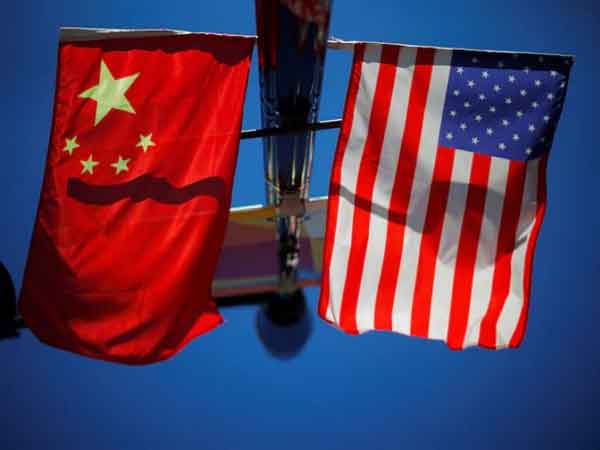
When the US-China trade war cools down
May 13, 2025
Washington [US], May 13: After two days of negotiations, the US-China trade war cooled down when the two sides temporarily lifted most of the recently imposed tariffs on each other, but this may force other economies to quickly negotiate with Washington to avoid being "left behind".
Early yesterday morning (May 12, Vietnam time), the US and China announced that the two-day negotiation in Geneva (Switzerland) had achieved positive results, with both sides finding common ground because they shared many interests.
90 days "ceasefire"
By noon of the same day (Vietnam time), the two sides announced an agreement to temporarily suspend most tariffs on each other for 90 days to negotiate. Accordingly, the US temporarily reduced tariffs on Chinese goods from 145% to 30% (including a 10% base rate of reciprocal tariffs and a 20% punitive tariff due to the fentanyl issue). In return, China reduced tariffs on US goods from 125% to 10%.
Since President Donald Trump took office, the US has been steadily increasing tariffs on China. However, in the first half of April, the US eliminated high tariffs on smartphones, computers and some other electronic devices imported from China. This is considered a major breakthrough for US technology companies such as Apple, Dell, HP... whose supply depends on factories in China. In 2024, the total value of Chinese electronic equipment, accessories and machinery exported to the US was 123.8 billion USD (accounting for 28.2% of China's export turnover to the US).
The latest agreement comes as China faces significant challenges due to its trade war with the US, while the economic slowdown in its recovery from the Covid-19 pandemic has yet to be resolved. On the other hand, the US is also facing significant inflationary pressure due to increased import tariffs, which have increased prices for goods, while the country is still unable to produce its own domestic supply. The US economy shrank by 0.3% in the first quarter of 2025, making the risk of recession even greater.
Therefore, the agreement reached by the US and China after negotiations from May 10-11 has also helped both sides "breathe easier" to resolve internal economic issues.
Where is the future?
However, trade tensions between the two countries have lasted since 2018 and there are many deep disagreements that are not easy to resolve.
Responding to Thanh Nien on May 12, Professor Stephen Robert Nagy (International Christian University - Japan, scholar at the Japan Institute of International Affairs) commented: "It is too early to say whether the two sides will reach a long-term agreement or not." According to Professor Nagy, President Trump has repeatedly emphasized that it will be necessary to restructure US trade and move jobs back to this country, not to let the benefits tilt to China.
Professor Nagy further analyzed: "The question is whether tariffs will have a negative impact on both economies? The answer is yes. In more detail, the Chinese economy may be more vulnerable because it depends heavily on exports to the US and is facing the risk of economic recession. If it does not respond effectively, millions of Chinese people will lose their jobs. On the contrary, the US faces rising inflation due to tariffs. In the short term, both may be vulnerable. However, in the medium and long term, China will find it difficult to compensate for the damage from the trade war with the US. The above fact is the driving force that helps the two sides temporarily reach an agreement, but it is difficult to reach a solution soon for the strategic competition between the two countries, because both Washington and Beijing understand that the winner will shape the future and the international order."
In the immediate future, the above agreement, along with the 90-day "grace period", is an opportunity for US businesses to take advantage of increasing import orders from China to supplement supply and reserves for the US market. This will cause the 90-day "grace period" advantage that many countries have with the US to disappear, forcing these economies to quickly step up negotiations with the US.
Source: Thanh Nien Newspaper









